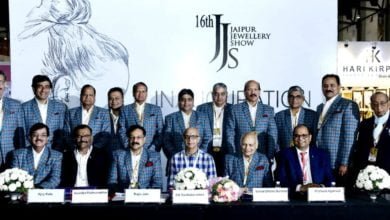Where are the young leaders ?
Political parties talk about India’s demographic dividend but fail miserably in giving tickets to the youth to let them take on the baton of political leadership from the geriatrics.

India is the country of young people. Half of its population, about 600 million people, is under 25, and two-thirds, under 35. No other country in the world has so many young people. Politicians and policymakers often talk about this demographic dividend but when it comes to sharing power, they back out.
Five Indian states are going to polls: Rajasthan on December 7, Madhya Pradesh on November 27, Chhatisgarh in three phases and Mizoram and Telangana
Like during all elections, the focus is on the youth and women. But this focus is a farce: it doesn’t convert into numbers. A look at the candidates fielded by two major national political parties, the Congress and the BJP, proves this. In Rajasthan, only 882 candidates are under 40 years (out of 2,294 candidates in the fray). For women, this is even fewer: only 94 women. Congress is slightly better in giving tickets to young leaders than the BJP, but a minor statistics here or there doesn’t neutralize the fact that youth in politics is a minority.
Let’s consider young Parliamentarians. In 2004, 21 Lok Sabha MPs were under the age of 35. This number dwindled a little to 21 in 2009 but rose in 2014 to 32. In a House of 545 members, this number has never even been 10%, an indication that youth have never been the focus of political leadership in the country. India has elected several MPs who were 26, just a year older than the minimum age for contesting election in India. a majority of them have a political lineage.
In a write-up in Washington Post in June 2014, Adam Taylor argued that nearly one quarter of members of parliament in the new Lok Sabha were from Indian dynasties, quoting an Indian newspaper. The Indian newspaper wrote that some 130 MPs out of 545 in India’s parliament came from political families.
India’s love of political dynasties hasn’t appeared overnight, of course. Previous research from Anjali Bohlken and Kanchan Chandra found that the number of Lok Sabha MPs with at least one family connection in politics was 20% in 2004 and 29% in 2009.
In his 2011 book, India: A Portrait, Patrick French sought to break down the nepotism in Indian politics, which he noted was “so taken for granted that it had never been fully quantified”. French found that 100 percent of MPs under 30 in the 15th Lok Sabha were from politically connected families. The implication is that as Indian democracy progresses, dynastic politics is becoming more entrenched, not less.
Political dynasties leave no or less room for newcomers. In her 2018 book, Dreamers: How Young Indians Are Changing the World, author, Delhi journalist Snigdha Poonam wrote, “No matter how poorly placed they find themselves now, they make up the world’s largest ever cohort of like-minded young people, and they see absolutely no reason why the world shouldn’t run by their rules.”
But in politics, these “like-minded young people” cannot make their rules, let alone the world run by them.
The political leadership of the country believes in the dictum: You vote for us, we work for you, but don’t ask for participation. Even when they are looking for new faces to replace the tainted or the elders, they cannot look beyond political families.
The governments prepare policies for empowering the youth but hate to get the youth on the other side of the policy making process.
According to the 2017 report by the Ministry of Statistics and Programme Implementation, Youth in India, the National Youth Policy (NYP-2014) launched in February 2014 proposes a holistic ‘vision’ for the youth of India, which is “To empower youth of the country to achieve their full potential, and through them enable India to find its rightful place in the community of nations”.
The NYP-2014 has defined ‘youth’ as persons in the 15-29 age group.
The report attempted to identify the issues of importance for youth under the broad categories: population dynamics, marital statistics, fertility & contraception, mortality & neonatal health care, literacy & employment and crime. The report also incorporates a synopsis of the on-going schemes and programmes for the welfare of youth in India. An overview of United Nations youth related initiatives/programmes are also included in the report.
Youth being enthusiastic, vibrant, innovative and dynamic in nature is the most important section of the population in any country, more so in India where they are in a majority. A country’s ability and potential for growth is determined by the size of its youth population.
To work for the youth, we need more youth in the Parliament. This is a fact that politicians don’t want to recognize. The politicians and political parties only eye the youth as a vote bank.
And this vote bank is quite a number!
According to some reports, there are around 18 million first-time voters who will cast their vote in 2019 general elections. In Rajasthan, out of 47,672,871 electorate, 2,029,680 are first-time or millennial voters.
Political parties are looking at this group with slurps. They have launched outreach programmes for the millennial voters.
Prime Minister Narendra Modi said in a ‘Mann ki Baat’ episode, “It is now time that a system is created where newest development opportunities are easily accessible for the youth of new India as they turn 18.”
Student wings of political parties have launched outreach programmes in last few years.
Some experts argue that the answer to the question – why fewer Indians find themselves in politics – lies in the culture. While India’s Western-influenced private sector and academe have encouraged the entry of talented, ambitious young men and women, retail politics has largely relied on traditional local leaders who have paid their political dues at the grassroots. The culture venerates seniority. The culture endows older people with canniness that may not necessarily exceed that of younger leaders.
Indeed, the culture dictates that older people be given respect by the masses.
Some groups are grooming the young people for leadership positions in politics. In 2008, Prof. Klaus Schwab, the founder of the World Economic Forum, formed a forum for global leaders under the age of 40. Professor Schwab said that the group would identify potential economic, political, social and academic leaders around the world.
India also needs something along these lines because the country has no shortage of educated, sophisticated young people in all fields of endeavour. A nonpartisan training institution could be set up, funded by industry and supported by various political parties, to create a cadre of young people for leadership positions. Perhaps it could be called the Institute of Public Service.








